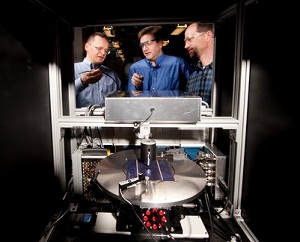Report: Solar less costly than other forms of electricity
 The cost of photovoltaics is less than current levelized cost of electricity (LCOE) calculations consider it to be, according to recently published research in Renewable and Sustainable Energy Reviews. The research finds that numerous factors related to the LCOE of PV are misconceived and deserve recalculations.
The cost of photovoltaics is less than current levelized cost of electricity (LCOE) calculations consider it to be, according to recently published research in Renewable and Sustainable Energy Reviews. The research finds that numerous factors related to the LCOE of PV are misconceived and deserve recalculations.
LCOE is the price that must be set for electricity generated from a source to break even. It considers numerous factors of a generating source, including initial cost, operations and maintenance—including degradation and other factors. It’s a measure that investors, utilities and others can compare the costs of an electric source. For PV, this needs to be re-examined, according to “A review of solar photovoltaic levelized cost of electricity.” The research was presented by Michigan Technological University Associate Professor Joshua Pearce, Ph.D., and Kadra Branker and Michael Pathak of Queen´s University in Kingston, Ontario.
Two of the main issues in how the costs of photovoltaics are calculated, degradation and lifetime, need reevaluation, according to Pearce. When people consider LCOE for PV, they calculate its short lifetimes and high rates of degradation, both of which need to be reconsidered.
“We know they’re going to last and not degrade at 5 percent a year,” said Pearce. “It’s time to use real numbers, and when you do, it radically reduces the cost of solar.”
If the real LCOE of PV is considered, the cost of solar power already is below that of other electricity sources in certain markets, according to the peer-reviewed research. It suggests an updated means of calculating the LCOE rate for PV when considering solar for a renewable energy project.
“This is showing how you make the calculations including up-to-date figures like life expectancy,” Pearce said.
Using updated calculations should also change how solar is looked at in terms of financing.
“If you can get good financing it really influences costs,” Pearce said. But that’s also up to the countries and banks that are financing projects. “Once countries get used an asset that produces for 30 years [PV should be more attractive].”
Pearce was recently quoted modules at 99 cents per watt for a 1 kilowatt project at the university.
“What’s remarkable for anyone that’s following the industry, they should be amazed that we’re selling panels for under $1 a watt,” Pearce said.
Even since the research was sent to the review (in March 2011) prices for modules have fallen.
That’s still making it hard to determine the LCOE. Between that and the potential for efficiency improvements in the technology, particularly in terms of thin-film PV, the LCOE for PV should continue to drop.



